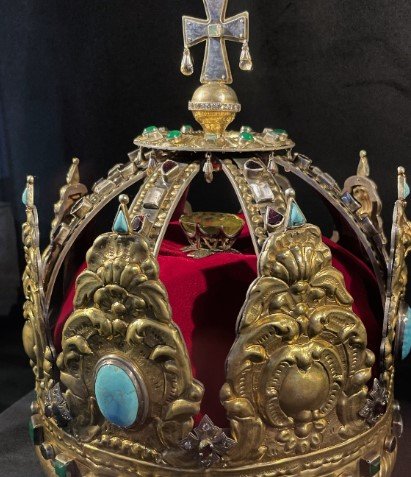From ancient village councils to the creative protests of today, democracy has deep roots in Georgian culture. Known for its mix of Eastern and Western influences, Georgian society has always cherished justice, equality, and free expression. This enduring push for democratic values is woven through Georgia’s rich history, art, and traditions, shaping the resilience and identity of the Georgian people.
Early Democratic Roots: The Khevisberi and Council of Elders
In Georgia’s highland villages, the early seeds of democracy took root through communal councils. The Khevisberi, or “elder,” played a central role in these mountainous communities. Respected as a fair and wise figure, the Khevisberi guided the community on moral and social matters, ensuring that decisions were made for the collective good. Alongside the Khevisberi, the Council of Elders—comprised of heads from each household—made key decisions on local issues, including land disputes and trade regulations.
In these councils, decisions were made through consensus, where every voice mattered. This participatory approach set a foundation of self-governance and community responsibility, ideas that continue to resonate in Georgian culture. Anthropologists and historians, like Simon Janashia, have documented the influence of these early councils, which resisted external rule and maintained a unique system of governance focused on justice and equality. The traditions upheld by the Khevisberi and the Council of Elders reflected democratic ideals of representation and accountability, values that would echo through centuries of Georgian society.

Golden Age Democracy: Shota Rustaveli’s Influence
Georgia’s Golden Age (11th to 13th centuries) brought a surge of cultural and intellectual achievement, with the epic poet Shota Rustaveli embodying democratic ideals in his work. Rustaveli’s famous poem, The Knight in the Panther’s Skin, promoted equality, justice, and loyalty—principles that resonate with democratic values even today. In this tale, Rustaveli’s characters, despite differing backgrounds, unite in their pursuit of virtue, treating each other as equals.
Beyond Rustaveli’s poetry, the Golden Age produced leaders like Queen Tamar, a monarch celebrated for her progressive approach. Queen Tamar ruled with a council known as the Darbazi, which included voices from different societal sectors—nobles, military leaders, and clergy. Though Tamar held supreme power, her consultation with the council showcased a commitment to the people’s voice, embodying a form of governance that respected input from varied perspectives.
Georgian literature of the time also underscored the importance of accountability. Epic tales like Abdulmesiani emphasized the idea of just leadership, portraying rulers who served their people and were accountable for their actions. These stories reinforced the concept that leaders should protect and care for their people, a standard that echoed the values of fairness and integrity foundational to democratic societies.
Christian Influence: The Orthodox Church as a Force for Equality
Christianity, which became Georgia’s state religion in 326 CE, brought ideals of compassion and equality into the Georgian cultural fabric. St. Nino, the missionary credited with bringing Christianity to Georgia, is a symbol of humility and social justice, promoting the view that all individuals are equal under God. In a society that often upheld hierarchical structures, the Christian message of collective responsibility and respect had a transformative impact.
Monasteries like Gelati and Iqalto played a crucial role, offering education, shelter, and aid to people across social classes. These monastic communities championed charity and education, spreading ideals of compassion and responsibility. During periods of invasion and strife, the Georgian Orthodox Church defended the vulnerable, acting as a stabilizing force and a preserver of Georgian language and culture.
Georgian art and literature also reflected these values. Hagiographies, or saints’ biographies, portrayed figures who sacrificed for the greater good, reinforcing values of selflessness and compassion. Iconography and church frescoes depicted saints aiding the poor, serving as visual reminders of the Church’s social teachings. In this way, the Church infused democratic ideals into the Georgian way of life, linking spirituality with social responsibility.
Rise of Nationalism: 19th and Early 20th Century Democratic Movements
The 19th and early 20th centuries saw a powerful wave of nationalism in Georgia, spurred by the country’s resistance to Russian imperial rule. During this time, artists, writers, and intellectuals used their craft to fuel a national revival, intertwining the struggle for democracy with a strengthened Georgian identity. As Georgia endured foreign rule, this cultural movement preserved the nation’s distinct character while inspiring democratic aspirations for freedom and unity.
Nationalistic art and literature became vehicles for democratic values, promoting ideas of independence and resistance. Writers like Ilia Chavchavadze emphasized self-governance and individual rights, energizing the Georgian people with visions of autonomy. This period of cultural renaissance not only kept Georgian traditions alive but also laid the groundwork for a democratic society, celebrating freedom of thought and resistance to oppression.
Through these works, Georgian art and culture fostered a collective identity that valued democratic ideals, even under imperial domination. This revival movement served as a reminder that the spirit of democracy could endure, despite political hardship, inspiring future generations to continue the pursuit of self-determination.
